Vauxhall Astra vs VW Tayron – Differences & prices compared
Everyday use, family trips or long-distance drives – here’s where the differences show.
Discover whether Vauxhall Astra or VW Tayron fits your lifestyle better.
Costs and Efficiency:
Price and efficiency are often the first things buyers look at. Here it becomes clear which model has the long-term edge – whether at the pump, the plug, or in purchase price.
Vauxhall Astra has a clearly advantage in terms of price – it starts at 25200 £, while the VW Tayron costs 39000 £. That’s a price difference of around 13787 £.
Fuel consumption also shows a difference: VW Tayron manages with 0.40 L and is therefore convincingly more efficient than the Vauxhall Astra with 2.20 L. The difference is about 1.80 L per 100 km.
As for range, the Vauxhall Astra performs significantly better – achieving up to 419 km, about 293 km more than the VW Tayron.
Engine and Performance:
Power, torque and acceleration say a lot about how a car feels on the road. This is where you see which model delivers more driving dynamics.
When it comes to engine power, the VW Tayron has a slightly edge – offering 272 HP compared to 225 HP. That’s roughly 47 HP more horsepower.
In acceleration from 0 to 100 km/h, the VW Tayron is noticeable quicker – completing the sprint in 6.10 s, while the Vauxhall Astra takes 7.50 s. That’s about 1.40 s faster.
In terms of top speed, the VW Tayron performs barely noticeable better – reaching 240 km/h, while the Vauxhall Astra tops out at 235 km/h. The difference is around 5 km/h.
There’s also a difference in torque: VW Tayron pulls barely noticeable stronger with 400 Nm compared to 360 Nm. That’s about 40 Nm difference.
Space and Everyday Use:
Cabin size, boot volume and payload all play a role in everyday practicality. Here, comfort and flexibility make the difference.
Both vehicles offer seating for 5 people.
In curb weight, Vauxhall Astra is evident lighter – 1341 kg compared to 1682 kg. The difference is around 341 kg.
In terms of boot space, the VW Tayron offers significantly more room – 885 L compared to 422 L. That’s a difference of about 463 L.
In maximum load capacity, the VW Tayron performs noticeable better – up to 2090 L, which is about 751 L more than the Vauxhall Astra.
When it comes to payload, VW Tayron to a small extent takes the win – 566 kg compared to 509 kg. That’s a difference of about 57 kg.
Who wins the race?
The VW Tayron proves to be outperforms in nearly all aspects and therefore becomes our DriveDuel Champion!
VW Tayron is the better all-rounder in this comparison.
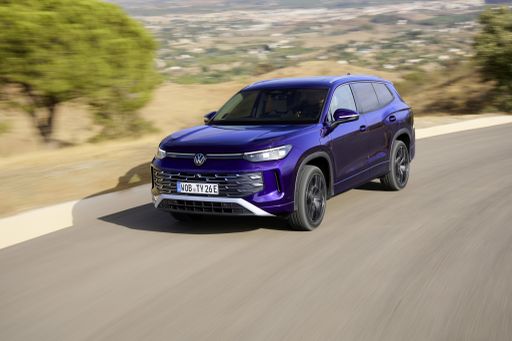
VW Tayron
Vauxhall Astra
The Opel Astra exudes a sleek and modern design, making it a standout choice in the compact car segment. Its interior is thoughtfully crafted, providing both comfort and cutting-edge technology for an enhanced driving experience. The vehicle is also celebrated for its efficient performance, adeptly balancing power with fuel economy to suit urban and long-distance journeys alike.
details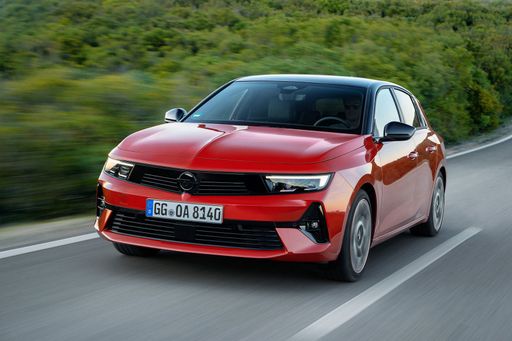 @ www.media.stellantis.com
@ www.media.stellantis.com
 @ www.media.stellantis.com
@ www.media.stellantis.com
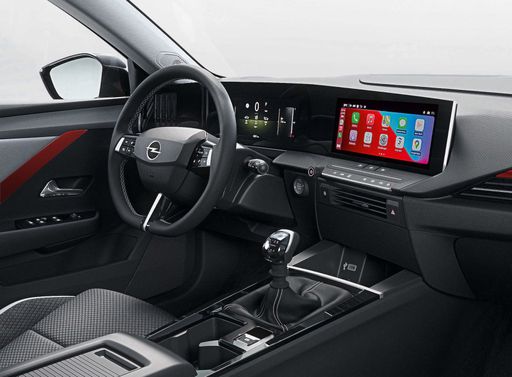 @ www.media.stellantis.com
@ www.media.stellantis.com
VW Tayron
The Tayron stands out as a stylish and versatile SUV that expertly blends form and function. With its spacious interior and modern design, it caters to families and adventure seekers alike, making every journey enjoyable. Equipped with advanced technology and safety features, the Tayron promises a driving experience that is both secure and exhilarating.
details @ volkswagen-newsroom.com
@ volkswagen-newsroom.com
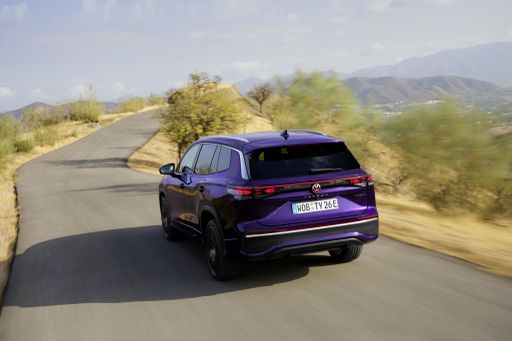 @ volkswagen-newsroom.com
@ volkswagen-newsroom.com
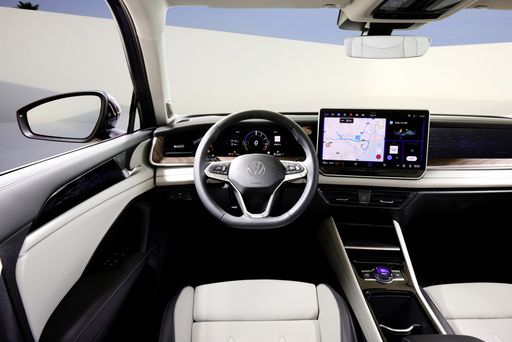 @ volkswagen-newsroom.com
@ volkswagen-newsroom.com
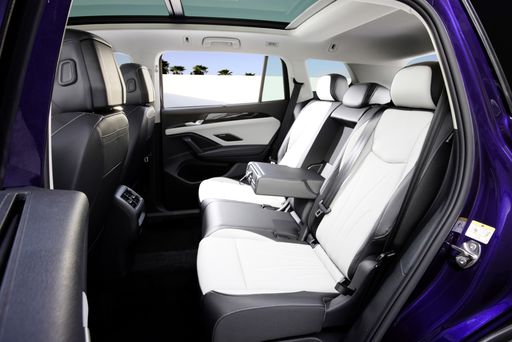 @ volkswagen-newsroom.com
@ volkswagen-newsroom.com

|

|
|
|
|
Costs and Consumption |
|
|---|---|
|
Price
25200 - 40500 £
|
Price
39000 - 52600 £
|
|
Consumption L/100km
2.2 - 6 L
|
Consumption L/100km
0.4 - 8.5 L
|
|
Consumption kWh/100km
15.40 kWh
|
Consumption kWh/100km
-
|
|
Electric Range
82 - 419 km
|
Electric Range
117 - 126 km
|
|
Battery Capacity
51 kWh
|
Battery Capacity
19.70 kWh
|
|
co2
0 - 135 g/km
|
co2
9 - 192 g/km
|
|
Fuel tank capacity
42 - 52 L
|
Fuel tank capacity
45 - 58 L
|
Dimensions and Body |
|
|---|---|
|
Body Type
Hatchback
|
Body Type
SUV
|
|
Seats
5
|
Seats
5
|
|
Doors
5
|
Doors
5
|
|
Curb weight
1341 - 1736 kg
|
Curb weight
1682 - 1948 kg
|
|
Trunk capacity
352 - 422 L
|
Trunk capacity
705 - 885 L
|
|
Length
4374 mm
|
Length
4792 mm
|
|
Width
1860 mm
|
Width
1853 - 1866 mm
|
|
Height
1432 - 1488 mm
|
Height
1666 - 1668 mm
|
|
Max trunk capacity
1268 - 1339 L
|
Max trunk capacity
1915 - 2090 L
|
|
Payload
414 - 509 kg
|
Payload
489 - 566 kg
|
Engine and Performance |
|
|---|---|
|
Engine Type
Petrol, Diesel, Electric, Petrol MHEV, Plugin Hybrid
|
Engine Type
Petrol MHEV, Plugin Hybrid, Diesel, Petrol
|
|
Transmission
Manuel, Automatic
|
Transmission
Automatic
|
|
Transmission Detail
Manual Gearbox, Automatic Gearbox, Reduction Gearbox, Dual-Clutch Automatic
|
Transmission Detail
Dual-Clutch Automatic
|
|
Drive Type
Front-Wheel Drive
|
Drive Type
Front-Wheel Drive, All-Wheel Drive
|
|
Power HP
130 - 225 HP
|
Power HP
150 - 272 HP
|
|
Acceleration 0-100km/h
7.5 - 10.6 s
|
Acceleration 0-100km/h
6.1 - 9.7 s
|
|
Max Speed
170 - 235 km/h
|
Max Speed
204 - 240 km/h
|
|
Torque
230 - 360 Nm
|
Torque
250 - 400 Nm
|
|
Number of Cylinders
3 - 4
|
Number of Cylinders
4
|
|
Power kW
96 - 165 kW
|
Power kW
110 - 200 kW
|
|
Engine capacity
1199 - 1598 cm3
|
Engine capacity
1498 - 1984 cm3
|
General |
|
|---|---|
|
Model Year
2023 - 2025
|
Model Year
2025
|
|
CO2 Efficiency Class
D, A, C, B
|
CO2 Efficiency Class
E, B, F, G
|
|
Brand
Vauxhall
|
Brand
VW
|
What drive types are available for the Vauxhall Astra?
Available configurations include Front-Wheel Drive.
The prices and data displayed are estimates based on German list prices and may vary by country. This information is not legally binding.
